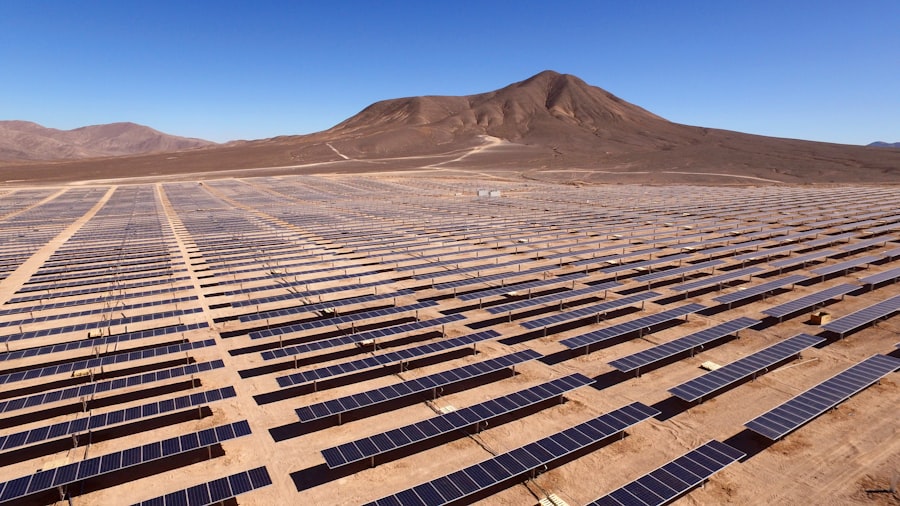In recent years, green investing has emerged as a significant trend within the financial markets, driven by a growing awareness of environmental issues and the urgent need for sustainable development. This investment approach focuses on allocating capital to projects and companies that prioritize environmental sustainability, social responsibility, and ethical governance. The rise of green investing can be attributed to several factors, including increased public awareness of climate change, the proliferation of information regarding corporate practices, and a shift in consumer preferences towards sustainable products and services.
As a result, investors are increasingly seeking opportunities that not only promise financial returns but also contribute positively to society and the environment. The growth of green investing is also reflected in the increasing number of financial products designed to cater to this demand. Green bonds, for instance, have gained popularity as a means for governments and corporations to raise funds specifically for environmentally friendly projects.
According to the Climate Bonds Initiative, the global green bond market reached over $1 trillion in issuance by 2021, showcasing the robust appetite for sustainable investment vehicles. Additionally, exchange-traded funds (ETFs) focused on environmental, social, and governance (ESG) criteria have proliferated, allowing investors to diversify their portfolios while aligning with their values. This shift signifies a broader transformation in the investment landscape, where sustainability is becoming a core consideration rather than a peripheral concern.
Environmental and Social Impact
The environmental and social impact of green investing is profound and multifaceted. By directing capital towards sustainable initiatives, investors can help mitigate climate change, promote renewable energy sources, and support social equity. For instance, investments in solar and wind energy projects not only contribute to reducing greenhouse gas emissions but also create jobs in emerging industries.
A report from the International Renewable Energy Agency (IRENA) indicates that the renewable energy sector employed over 11 million people globally in 2018, a number that continues to grow as more countries transition to cleaner energy sources. Moreover, green investing often emphasizes social responsibility by supporting companies that prioritize fair labor practices, community engagement, and diversity. For example, firms that adhere to ESG principles are more likely to implement policies that promote gender equality and inclusivity within their workforce.
This focus on social impact can lead to improved employee satisfaction and retention rates, ultimately benefiting the company’s bottom line. Research conducted by McKinsey & Company has shown that companies with diverse workforces are 35% more likely to outperform their peers in terms of financial performance. Thus, green investing not only addresses environmental concerns but also fosters social progress.
The Role of Technology in Green Investing

Technology plays a pivotal role in advancing green investing by enhancing transparency, efficiency, and accessibility within the investment landscape. Innovations such as blockchain technology are being utilized to create more transparent supply chains, enabling investors to trace the environmental impact of their investments more effectively. For instance, companies like Provenance are leveraging blockchain to provide consumers with verifiable information about the sustainability of products, thereby empowering investors to make informed decisions based on credible data.
Furthermore, advancements in data analytics and artificial intelligence (AI) are revolutionizing how investors assess ESG factors. Machine learning algorithms can analyze vast amounts of data from various sources, including social media sentiment and corporate disclosures, to provide insights into a company’s sustainability performance. This capability allows investors to identify potential risks and opportunities associated with their investments more accurately.
For example, firms like Sustainalytics and MSCI offer ESG ratings that help investors evaluate companies based on their environmental and social practices. As technology continues to evolve, it will further enhance the ability of investors to align their portfolios with their values while maximizing returns.
Government Policies and Regulations
| Country | Policy/Regulation | Impact |
|---|---|---|
| United States | Tax Cuts and Jobs Act | Lower corporate tax rates, increased investment |
| United Kingdom | Brexit | Changes in trade agreements and regulations |
| China | Foreign Investment Law | Improved market access for foreign investors |
Government policies and regulations play a crucial role in shaping the landscape of green investing. Many countries have recognized the importance of sustainable finance and have implemented frameworks to encourage investments in environmentally friendly projects. For instance, the European Union’s Green Deal aims to make Europe the first climate-neutral continent by 2050, promoting investments in renewable energy, sustainable agriculture, and biodiversity conservation.
This ambitious initiative not only sets clear targets for emissions reduction but also creates a favorable environment for green investments through incentives and funding opportunities. In addition to regulatory frameworks, governments are increasingly mandating transparency in corporate sustainability practices. The Task Force on Climate-related Financial Disclosures (TCFD) has gained traction globally as companies are encouraged to disclose their climate-related risks and opportunities.
This push for transparency helps investors make informed decisions while holding companies accountable for their environmental impact. As more governments adopt similar regulations, the demand for green investments is likely to increase, further solidifying its position within the financial markets.
Market Trends and Opportunities
The market trends surrounding green investing indicate a robust growth trajectory fueled by evolving consumer preferences and increasing institutional interest. One notable trend is the rise of impact investing, where investors seek not only financial returns but also measurable social and environmental outcomes. According to the Global Impact Investing Network (GIIN), the impact investing market reached $715 billion in assets under management in 2020, reflecting a growing commitment among investors to align their portfolios with positive societal change.
Another significant opportunity lies in the transition to renewable energy sources. As countries commit to reducing their carbon footprints, investments in solar, wind, and other renewable technologies are expected to surge. The International Energy Agency (IEA) projects that global renewable energy capacity will increase by 50% between 2019 and 2024, driven by falling costs and supportive policies.
This shift presents a wealth of opportunities for investors looking to capitalize on the growing demand for clean energy solutions.
Risks and Challenges in Green Investing

Despite its many advantages, green investing is not without its risks and challenges. One significant concern is the potential for “greenwashing,” where companies exaggerate or misrepresent their environmental efforts to attract investment. This practice can mislead investors who are genuinely seeking sustainable options and can undermine the credibility of the entire green investing movement.
To combat this issue, investors must conduct thorough due diligence and rely on reputable ESG ratings and certifications when evaluating potential investments. Additionally, the evolving regulatory landscape poses challenges for green investors. As governments implement new policies aimed at promoting sustainability, companies may face increased compliance costs or operational disruptions during transitions to greener practices.
Investors must remain vigilant about these regulatory changes and assess how they may impact the financial performance of their portfolios. Furthermore, market volatility can affect green investments disproportionately; for instance, during economic downturns, sustainable projects may struggle to secure funding compared to traditional industries.
The Importance of Corporate Responsibility
Corporate responsibility is integral to the success of green investing as it underscores the commitment of businesses to operate sustainably and ethically. Companies that prioritize corporate social responsibility (CSR) often find themselves better positioned to attract investment from socially conscious investors. For example, firms like Unilever have made significant strides in integrating sustainability into their business models by committing to reducing plastic waste and sourcing ingredients responsibly.
Such initiatives not only enhance brand reputation but also resonate with consumers who increasingly prefer products from socially responsible companies. Moreover, corporate responsibility extends beyond environmental considerations; it encompasses social equity and governance practices as well. Companies that actively engage with their communities and prioritize diversity within their workforce tend to foster stronger relationships with stakeholders.
This holistic approach can lead to enhanced customer loyalty and employee satisfaction while mitigating risks associated with reputational damage or regulatory scrutiny. As green investing continues to gain traction, corporate responsibility will remain a critical factor influencing investor decisions.
The Future of Green Investing
Looking ahead, the future of green investing appears promising as societal awareness of environmental issues continues to grow alongside technological advancements and supportive government policies. The integration of sustainability into mainstream investment strategies is likely to accelerate as more investors recognize that long-term financial performance is intrinsically linked to environmental stewardship and social responsibility. The emergence of new financial instruments tailored for sustainable investments will further facilitate this transition.
Additionally, as climate change impacts become increasingly evident, there will be heightened demand for innovative solutions that address these challenges. Investments in clean technology, sustainable agriculture, and circular economy initiatives are expected to flourish as businesses seek ways to adapt to a changing world. Furthermore, collaboration between public and private sectors will be essential in driving large-scale sustainable projects that require significant capital investment.
In conclusion, green investing represents a transformative shift in how capital is allocated within financial markets. By prioritizing environmental sustainability and social responsibility, investors can contribute positively to society while pursuing financial returns. As this movement continues to evolve, it will shape not only investment strategies but also corporate practices and government policies worldwide.
FAQs
What is green investing?
Green investing, also known as sustainable investing or socially responsible investing, refers to the practice of investing in companies or projects that are committed to environmental and social responsibility. This can include investing in renewable energy, clean technology, sustainable agriculture, and other environmentally friendly initiatives.
What are the benefits of green investing?
Green investing allows investors to support companies that are making a positive impact on the environment and society. It can also provide financial returns, as the demand for sustainable products and services continues to grow. Additionally, green investing can help drive positive change by encouraging companies to adopt more sustainable practices.
How has green investing grown in recent years?
Green investing has experienced significant growth in recent years, driven by increasing awareness of environmental issues and the potential for financial returns. According to the Global Sustainable Investment Alliance, sustainable investing assets reached $35.3 trillion globally at the start of 2020, a 15% increase from 2018.
What is the future outlook for green investing?
The future outlook for green investing is positive, as more investors and companies recognize the importance of sustainability. As governments around the world implement policies to address climate change and promote sustainable development, the demand for green investments is expected to continue growing. This is likely to lead to further innovation and expansion in the green investing market.









